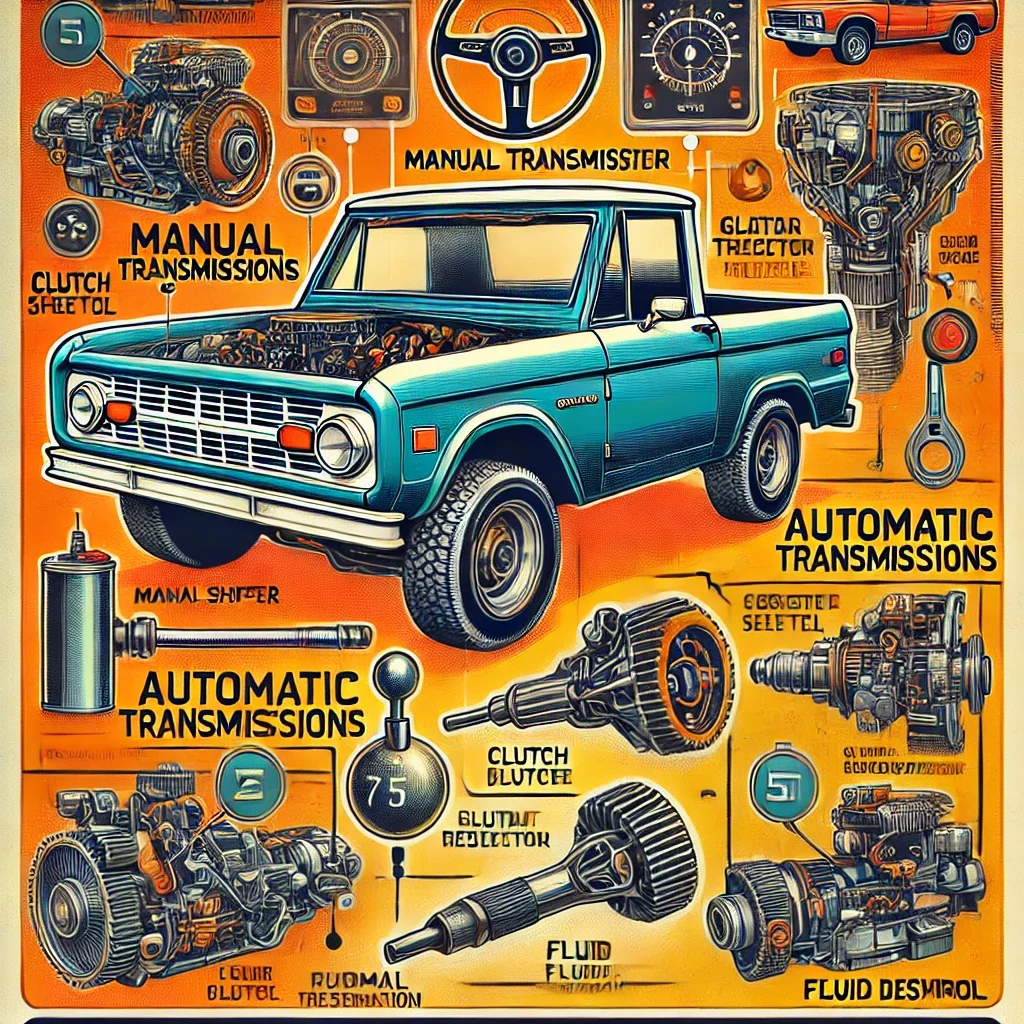Transmission Types and Guide for Classic Vehicles

Introduction
- Transmissions are one of the most critical components of any vehicle. For classic vehicle owners, understanding the type of transmission in their vehicles is essential for maintenance, repairs, and restoration.
Transmission Types
1. Manual Transmissions
- Description: Manual transmissions require the driver to shift gears manually using a clutch and gear shifter.
- Advantages:
- Greater control over the vehicle.
- Less expensive to repair.
- Preferred by restorers who value a classic driving experience.
- Maintenance:
- Check the transmission fluid level regularly.
- Adjust the clutch if necessary.
- Common Models:
- Ford Bronco 1980-1990:
- 4-speed manual transmission.
- Torque specifications for mounting bolts: 70-90 ft-lbs (95-122 Nm).
- Ford Bronco 1980-1990:
2. Automatic Transmissions
- Description: Automatic transmissions change gears automatically based on engine revolutions and vehicle speed.
- Advantages:
- Easier to use in modern traffic.
- Convenient for less experienced drivers.
- Maintenance:
- Replace the transmission fluid every 30,000-50,000 miles (48,000-80,000 kilometers).
- Replace filters as recommended by the manufacturer.
- Common Models:
- Ford Bronco Automatic:
- 3-speed or 4-speed automatic transmission.
- Fluid capacity: 7 quarts (6.6 liters), depending on the model.
- Ford Bronco Automatic:
Transmission Maintenance
Transmission Fluid
- Regularly check the fluid to ensure it’s clean and at an adequate level.
- The fluid should be bright red. If it’s brown or smells burnt, it needs replacement.
- Recommended Fluids:
- Dexron II type for most Ford Bronco models.
Common Problems
- Transmission Slipping:
- Cause: Low or burnt fluid, worn-out bands.
- Solution: Check fluid levels; adjust or replace bands.
- Difficulty Shifting Gears:
- Cause: Low fluid pressure or internal damage.
- Solution: Inspect pressure lines and the pump.
- Strange Noises:
- Cause: Damaged bearings or gears.
- Solution: Repair or replace components.
Manual vs Automatic Transmission Comparison
| Feature | Manual | Automatic |
|---|---|---|
| Maintenance Cost | Lower | Higher |
| Ease of Use | Requires experience | Easy for beginners |
| Vehicle Control | Better control on difficult terrains | Less manual control |
| Classic Preference | High | Medium |
Quick Troubleshooting
- Symptom: Noise when shifting gears.
- Likely Cause: Low fluid level or worn-out synchronizers.
- Suggested Action: Check fluid level and adjust synchronizers.
- Symptom: Transmission won’t engage.
- Likely Cause: Worn clutch or faulty torque converter.
- Suggested Action: Replace the clutch or inspect the torque converter.



